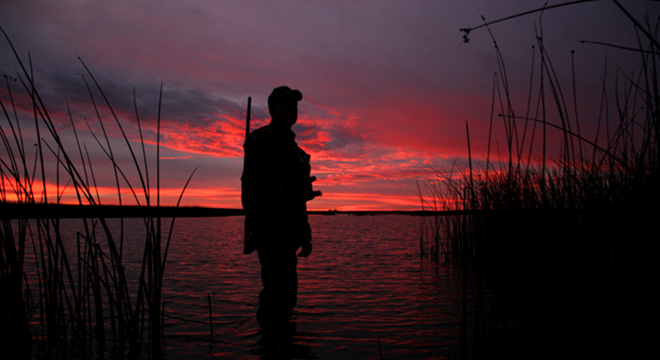Rep. Mike Thompson, the California Democrat charged with crafting gun safety policies in the House of Representatives, keeps talking about ducks.
More specifically, duck hunting.
“Federal law prohibits me from having more than three shells in my shotgun when I’m duck hunting. So federal law provides more protection for the ducks than it does for citizens,” Thompson said earlier this month during a panel discussion on gun violence at the liberal Center for American Progress.
Chicago Mayor Rahm Emanuel, also on the panel, was delighted by the line. “That’s a very powerful point,” Emanuel said. “My instinct is we’re gonna hear more of this line going forward.”
As it turns out, federal law places strict regulations on the types of firearms that can be used when hunting migratory birds, rules hunters have abided since the 1930s. Duck hunters are only allowed to use a shotgun, 10 gauge or smaller, that carries no more than three shells. If the shotgun carries more than three shells, the hunter is required to “plug” the gun so that only three shots can be fired before reloading.
To Thompson, this fact belongs in the debate over gun control that has taken over Washington since the Dec. 14 massacre in Newtown, Conn.
“My point is, when people say, ‘How dare you talk about putting limits on how many shells I can have in my gun?’ — that somehow this is unconstitutional, it’s an affront to, you know, God, country and apple pie — I think it’s important to point out that this isn’t something that’s new,” Thompson told TPM last week. “This is something that we already do and it’s something that we’ve done in the past.”
At the turn of the 20th century, when the conservation movement was gaining steam, the United States government felt it was necessary to protect migratory birds from excessive hunting. Commercial use of migratory birds, including waterfowl for consumption and song birds whose feathers were popular in women’s fashion, had led to a precipitous decline in the birds’ populations.
In 1916, the United States and Great Britain (on behalf of Canada) entered into a treaty to regulate the killing of bird populations that existed on both sides of the border. In order to carry out the treaty’s provisions, Congress passed the Migratory Bird Treaty Act of 1918, prohibiting the hunting, killing, trapping, sale or essentially handling in any way of migratory birds unless specifically authorized by the secretary of the interior. The law was immediately challenged as an overstep by the federal government, but the Supreme Court upheld it in 1920, ruling that the international treaty superseded the laws of individual states.
Since then, the MBTA, which was later amended to incorporate conventions with Mexico, Japan and Russia, has provided the framework under which the federal government regulates sports like duck hunting, an involved process that includes the input of scientists who track the birds’ populations and determine how many can be killed each year without compromising the population.
The current firearms restrictions were implemented in the 1930s along with a number of other measures to help preserve waning bird populations that suffered during the severe droughts that caused the Dust Bowl.
Brad Bortner, chief of the U.S. Fish and Wildlife Service’s’ Migratory Bird Program, told TPM hunters have generally been “supportive of the regulations” because they preserve waterfowl populations that they care about.
“We have been very conscientious, we have been very successful in sustaining populations” of waterfowl, Bortner, whose division at the the Department of the Interior oversees migratory bird populations, said.
Winning over the hunting community has recently been a major goal for gun control advocates as they push for things like universal background checks and an assault weapons ban.
“We need responsible hunters and sportsman to step up and join us,” Sen. Dick Durbin (D-IL) said during a Thursday press conference introducing legislation to ban assault weapons. “They use their guns safely and responsibly. They store their guns safely and responsibly. They comply with every aspect of the law. And they shake their heads when they hear the gun lobby speak for them.”
As head of the Gun Violence Prevention Task Force in the House, Thompson had representatives of hunting and sportsmen associations participate in a Jan. 23 hearing on Capitol Hill, where Thompson again brought up the three-shell limit for duck hunting. “There’s tremendous support from the hunting community out there already,” Thompson, a hunter himself, told TPM.
And the duck-hunting line does appear to be catching on among Democrats. Rep. Carolyn McCarthy (D-NY) used it at the same news conference where Durbin spoke.
“These are good law-abiding citizens,” McCarthy said. “They want to hunt. They want to go duck hunting. And the guns they use, duck hunting, you’re only allowed three bullets.”
“You’re willing to put restrictions in place and live with restrictions in place that are designed to benefit ducks,” Thompson said of gun control critics in his interview with TPM, “but you’re not willing to accept limits when you’re talking about people that would use firearms for inappropriate purposes.”
Thompson said he actually was duck hunting in California’s Yolo Bypass on the morning of the Newtown shooting. Of his refrain, Thompson said, “I’m a waterfowler, so you may hear that again.”






